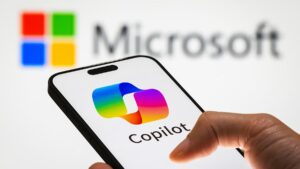Introducing the Model Context Protocol (MCP) in Copilot Studio: Streamlined Integration with AI Applications and Agents

Microsoft is committed to creating tools that enhance productivity and streamline workflows. We’re excited to share the introduction of Model Context Protocol (MCP) support in Microsoft Copilot Studio. With MCP, integrating AI applications and agents into Copilot Studio is simpler than ever, requiring just a few clicks.
What’s New: Model Context Protocol Integration
The Model Context Protocol (MCP) is a groundbreaking feature that allows developers to connect directly to existing knowledge servers and APIs from within Copilot Studio. When connected to an MCP server, actions and knowledge are automatically integrated into the agent and updated as technology evolves. This development makes agent construction easier and limits the time spent on maintenance.
MCP servers utilize a connector infrastructure in Copilot Studio. This ensures the implementation of security and governance controls typical of enterprise environments. Features such as Virtual Network integration, Data Loss Prevention, and multiple authentication methods are part of this release. Users can access real-time data, enhancing the capabilities of AI-driven agents.
Benefits of MCP
With MCP, our customers can:
- Connect Effortlessly to Data Sources: Whether utilizing an internal API or external data providers, MCP ensures a smooth and dependable integration into Copilot Studio.
- Utilize a Marketplace of Servers: Users can explore a growing collection of pre-built, MCP-enabled connectors, which speeds up and simplifies the integration with various tools.
- Enjoy Flexible Action Capabilities: MCP servers can provide tools and data dynamically, allowing for greater flexibility and reduced costs associated with maintenance and integration.
To start using MCP, open your agent in Copilot Studio, select ‘Add an action,’ and search for your desired MCP server!
This new feature also includes Software Development Kit (SDK) support, allowing for enhanced customization and integration options. Here’s how you can create your own MCP server:
Steps to Create Your Model Context Protocol Server
- Create the Server: The initial step involves setting up a server through one of the SDKs. This server will manage your data, models, and interactions, tailored to your specific requirements.
- Publish via a Connector: Next, establish a custom connector that links your setup in Copilot Studio with the model or data source.
- Consume Data in Copilot Studio: Finally, interact with your models and data once the server and connector are set up.
By following these steps, you can create a robust integration that not only connects systems seamlessly but also simplifies their management and expansion as needed.
We support Server-Sent Events (SSE) as the transport mechanism for enhanced data handling; this feature is currently in preview but will be rolled out to all environments soon.
Explore more about these exciting capabilities here: Extend your agent with Model Context Protocol (preview) – Microsoft Copilot Studio | Microsoft Learn.
What’s Next?
We are enthusiastic about the potential of Model Context Protocol and how it can rejuvenate user interaction with Copilot Studio. Our team is diligently working on additional features and enhancements to make your integration experience even better. We are eager to provide updates on new ways to connect your data and tools within Copilot Studio effortlessly.






